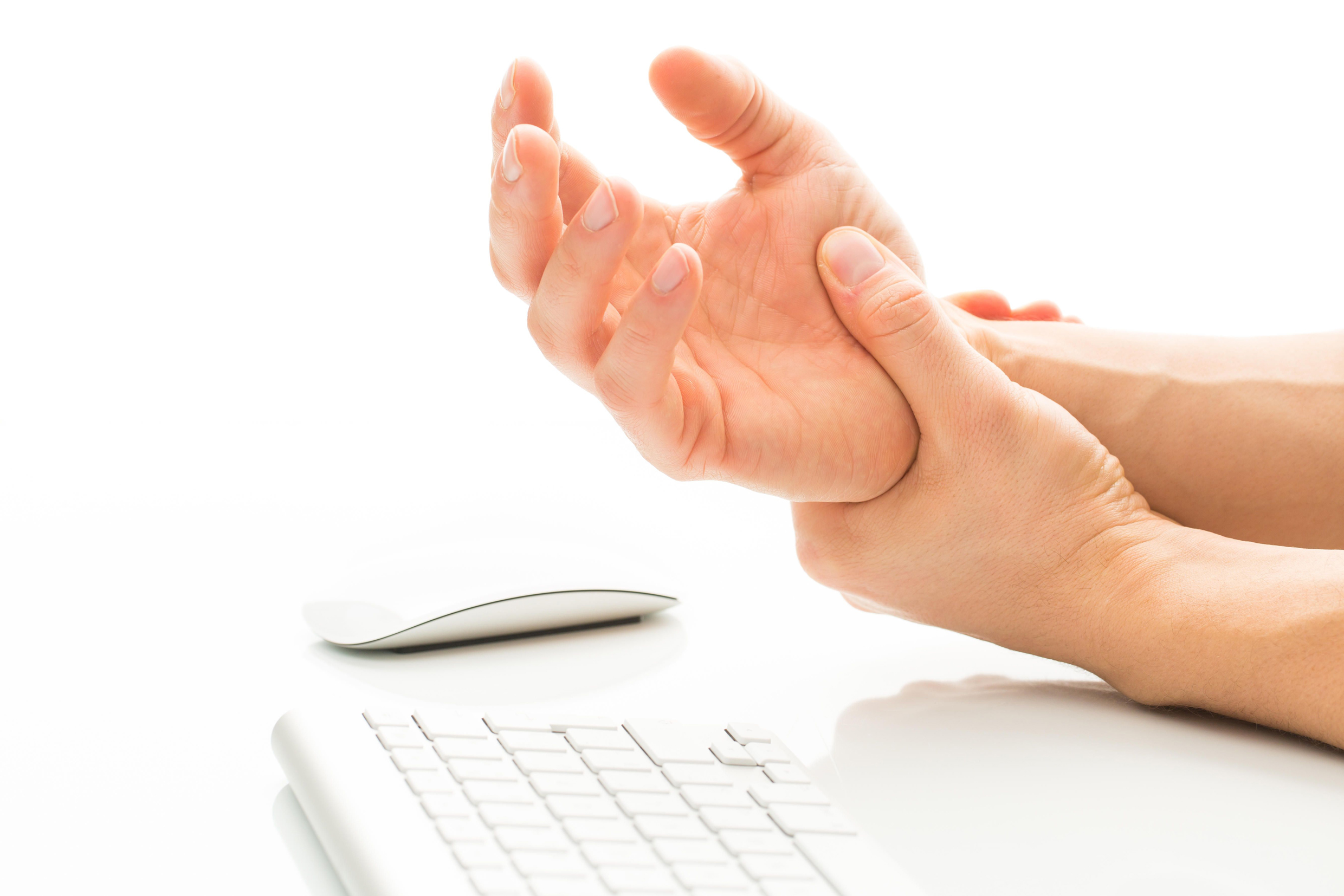It’s nearly 150 years since the first typewriter hit the shops, and the most distinctively designed keyboard became a universal icon.
Today, the characters on modern keyboards have almost exactly the same positioning as a manual portable typewriter and we use them more than ever – for studying, working and even messaging mates on our phones.

But while they’re a big feature in our lives, things like typing and using keyboards can also be associated with aches and pains – including repetitive arm strain.
What is repetitive arm strain?

“Repetitive arm strain, or repetitive strain injury, is a condition affecting muscles, tendons and nerves, caused through repetitive actions in our daily lives,” says Tom Jenane, nutrition and fitness expert for Natures Healthbox.
“A common misconception is that this comes from sports, however, it can come from simply having poor positioning while working at the desk on your laptop,” Jenane adds. “One of the most common ways people start to suffer from repetitive arm strain is by not having their work position set up sufficiently.
“Make sure your keyboard and mouse are a pertinent distance from your body – you neither want to be uncomfortably stretching or to have it too close to your body.
One trick is to try changing the settings on your mouse so it slows down, reducing the tension in your hand,” he suggests. If left unaddressed, this strain can lead to discomfort and even nerve pain in arm.
“While the arm is a key area, you may also find an ache in the neck if you’re having to look down at your computer screen, or don’t have effective lumbar support for your back.”
How do you know if you have repetitive arm strain?
“You’ll normally feel pain or discomfort in your wrists and hands, forearms, shoulders and neck.
The discomfort can involve some stiffness, throbbing ache, a swelling or even a sensitivity to different temperatures,” explains Jenane. “Often, these symptoms will come on slowly, but will build up over time if not sufficiently dealt with.”
Jeannie Di Bon, a movement therapist, says repetitive arm strain can range from tendonitis – an inflammation of the tendon (a tendon attaches muscles to bones) – and may cause pain, swelling or stiffness in the joint.
Carpal tunnel syndrome, meanwhile, happens when the carpal tunnel inside your wrist swells and squeezes the nerve.
“It’s often caused by repetitive hand movements – like computer work. Symptoms are pain, numbness, tingling or weakness in the hand.”

“You may know you have repetitive strain, because you will develop some or all of the symptoms above,” notes Di Bon.
“This will tell you the tissue’s inflamed. Everyday actions, like opening a jar or turning a door handle, will suddenly become painful.
“The body will be trying to immobilise the area to prevent further injury and inflammation. It is a natural safety response.”
What are the early warning signs?
Di Bon says: “Early warning signs are tingling or pins and needles, numbness, swelling or weakness. In the hands, you may start to lose grip or drop items.
“You must pay attention to these early signs before it becomes a chronic condition,” she stresses. “This will take much longer to settle if you let it become chronic.”
What can you do to relieve the pain?
As Di Bon points out: “Take regular breaks from computer work or manual work – even from hobbies or pastimes like knitting or painting.
You can do gentle movements to mobilise the tissues – they start to get inflamed if they’re held in the same position for a long time, so you need to compensate for this by doing other movements,” she adds.
And make sure to take regular breaks from your desk. “Potentially having a short walk around every 40 minutes – this could simply be going to get yourself a drink from the kitchen – as well as exercising more often,” suggests Jenane. “Or take up yoga, which can help with mobility and flexibility.”
There are also a number of ergonomic products available to buy, which can help with maintaining good posture and preventing aches and pains while you work or use a device, for example.
These include specially designed computer equipment. “However, you may also want to look into guidance from a physical therapist,” says Jenane. “And I’d always recommend speaking to your GP if you feel pain at any point.”
